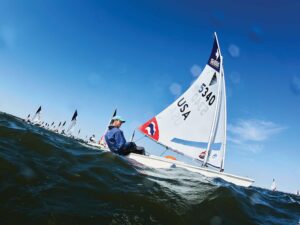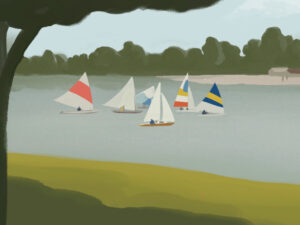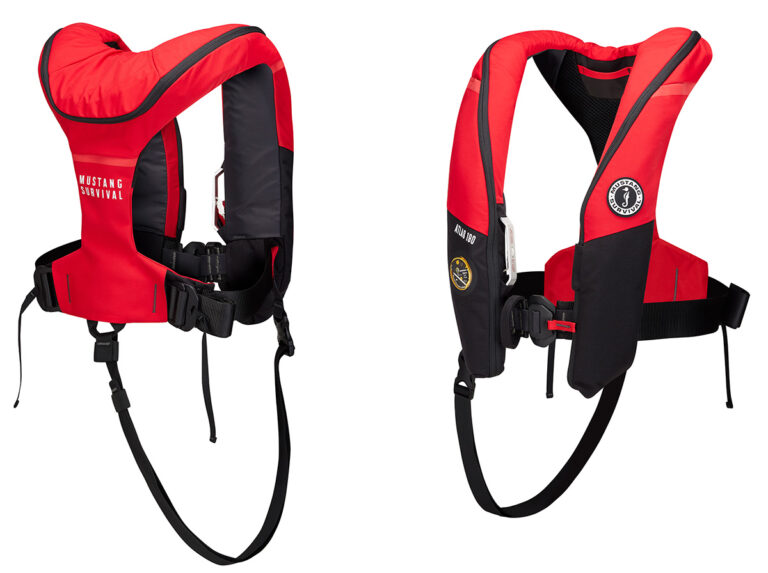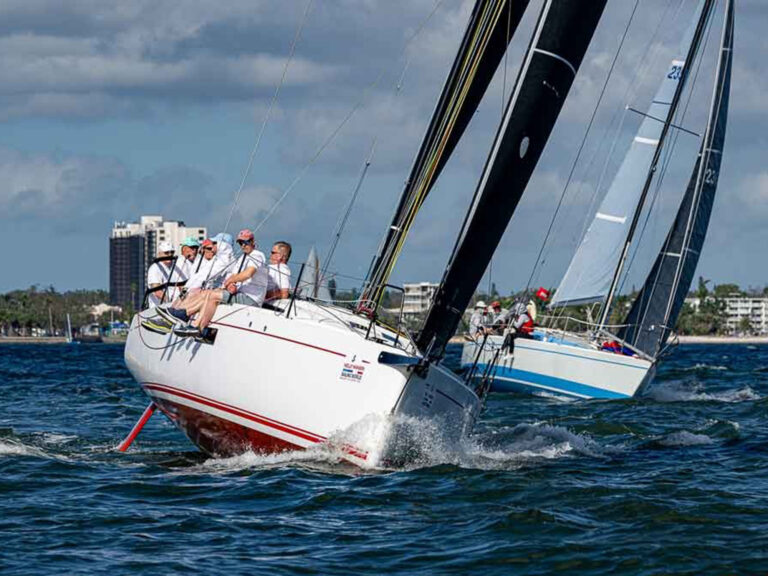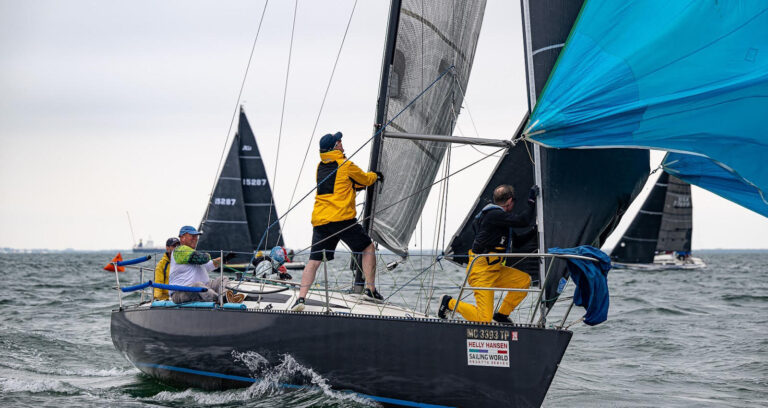“It’s going to be a really fun, interesting and performance oriented leg.” Carolijn Brouwer’s eyes blink in the Brazilian sun. She pauses for a couple of seconds, thinking of the 5,010 nautical miles stretching from Itajaí to Newport, in the USA. What is it exactly about it that makes this Team SCA’s sailor daydream? Well, the trade winds will be a dominant feature, and that makes for very nice sailing conditions.
“In the trades, you can get 15 to 20 knots of wind in beautiful reaching to downwind conditions and it’s all about the mode you’re in,” explains Carolijn. “The mode that you’re sailing in against the fleet, and the mode that you’re in with regards to the next bit of pressure.”
There is a fair bit to negotiate before and after the trades, though.
“Although there is a lot of trade wind sailing, it’s quite a tricky leg,” explains Simon Fisher, navigator of Abu Dhabi Ocean Racing.
“How do you get to Cabo Frio as fast as possible, and how do you get to the trade winds? Do you stay on the coast, which means you may never be able to get out again, or do you invest more on getting offshore, but then you might lose out to a boat that got a more direct route up the coast?”
That’s a lot of interrogations.
Having sailed that route several times, Team Brunel’s navigator Andrew Cape seems to have some of the answers. “After the start, it’s a wise idea to catch the southeast trade winds as quickly as possible. As it looks at the moment, we’ll be sailing on a beam reach along the coast of Brazil towards the Equator. Along the way you meet the South Atlantic High, a permanent area of high pressure in the South Atlantic. Around the Equator, we’ll be sailing into the Doldrums for the fourth time in this race.
After passing them, we’ll be sailing in the northern hemisphere again for the first time in six months and catching the stable northeast trade winds.
The risk of unstable weather will increase after the island of Bermuda and we’ll have to cope with strong ocean currents, low-pressure areas and the westerly winds.”
In fact, that last part along the USA coast could be a game changer. Dealing with the systems coming off the shore could prove challenging, and it’s getting cold, too.
“You go from wearing shorts and T-shirts to everything you can find in your kit bag!” laughs Simon. “Last time we stopped in Miami and the little bit extra up to Newport makes quite a difference in how you approach the leg and the routing.
As you pass Recife and further north, there are good currents inshore but you may be able to invest more for the future by staying further off. There are a lot of subtleties in this leg that could make a difference in the end.”

Volvo Ocean Race 2014 – 15 Leg 6 to Newport

Volvo Ocean Race 2014-15 – Leg 5 to Itajai
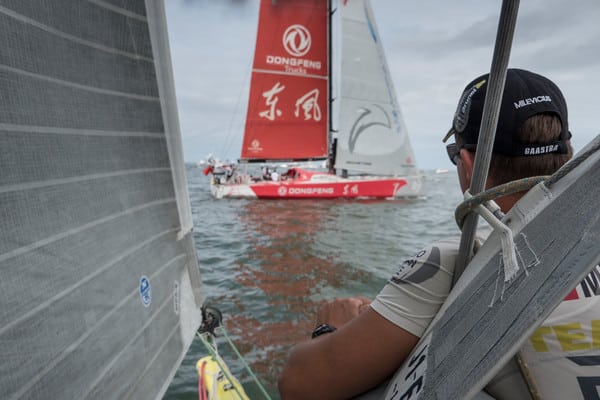
Volvo Ocean Race 2014-15 – Leg 6 to Newport

Volvo Ocean Race 2014-2015 – Leg 6

Volvo Ocean Race 2014-2015 – Leg 6



Volvo Ocean Race 2014-15 – Leg 6 to Newport

MAPFRE EN LA VOLVO OCEAN RACE./ MAPFRE IN THE VOLVO OCEAN RACE.

Volvo Ocean Race 2014-15 – Leg 5 to Itajai



